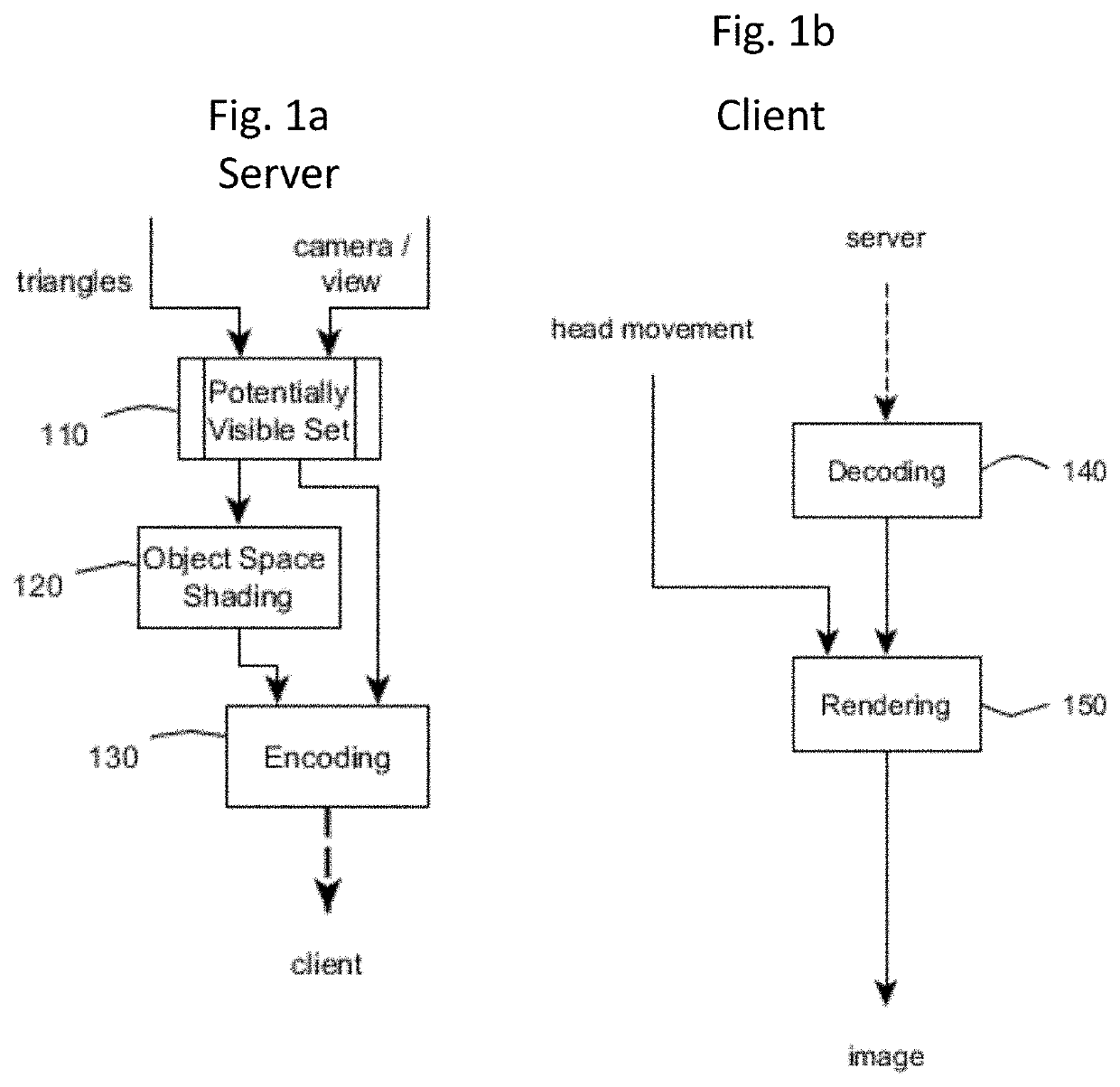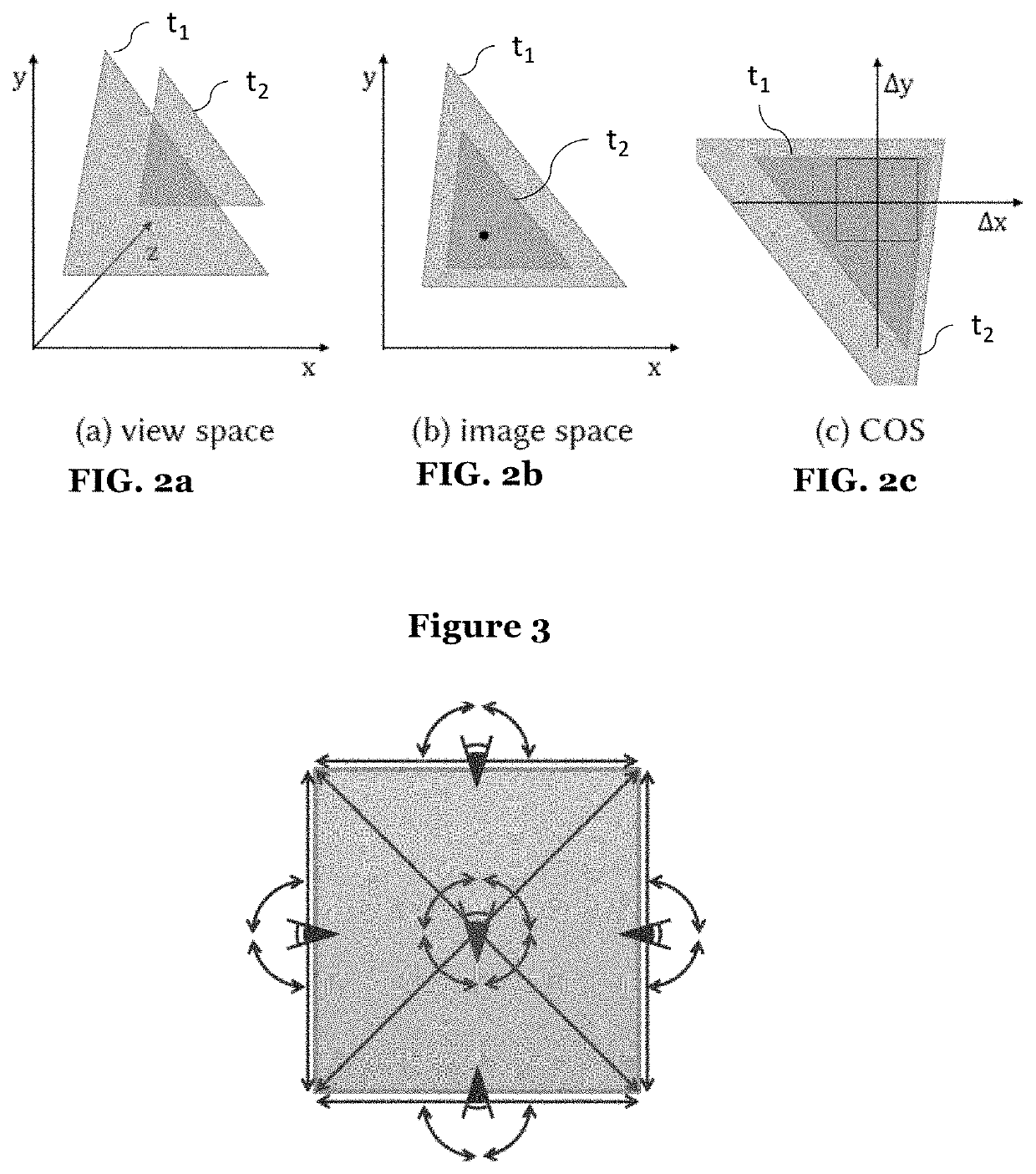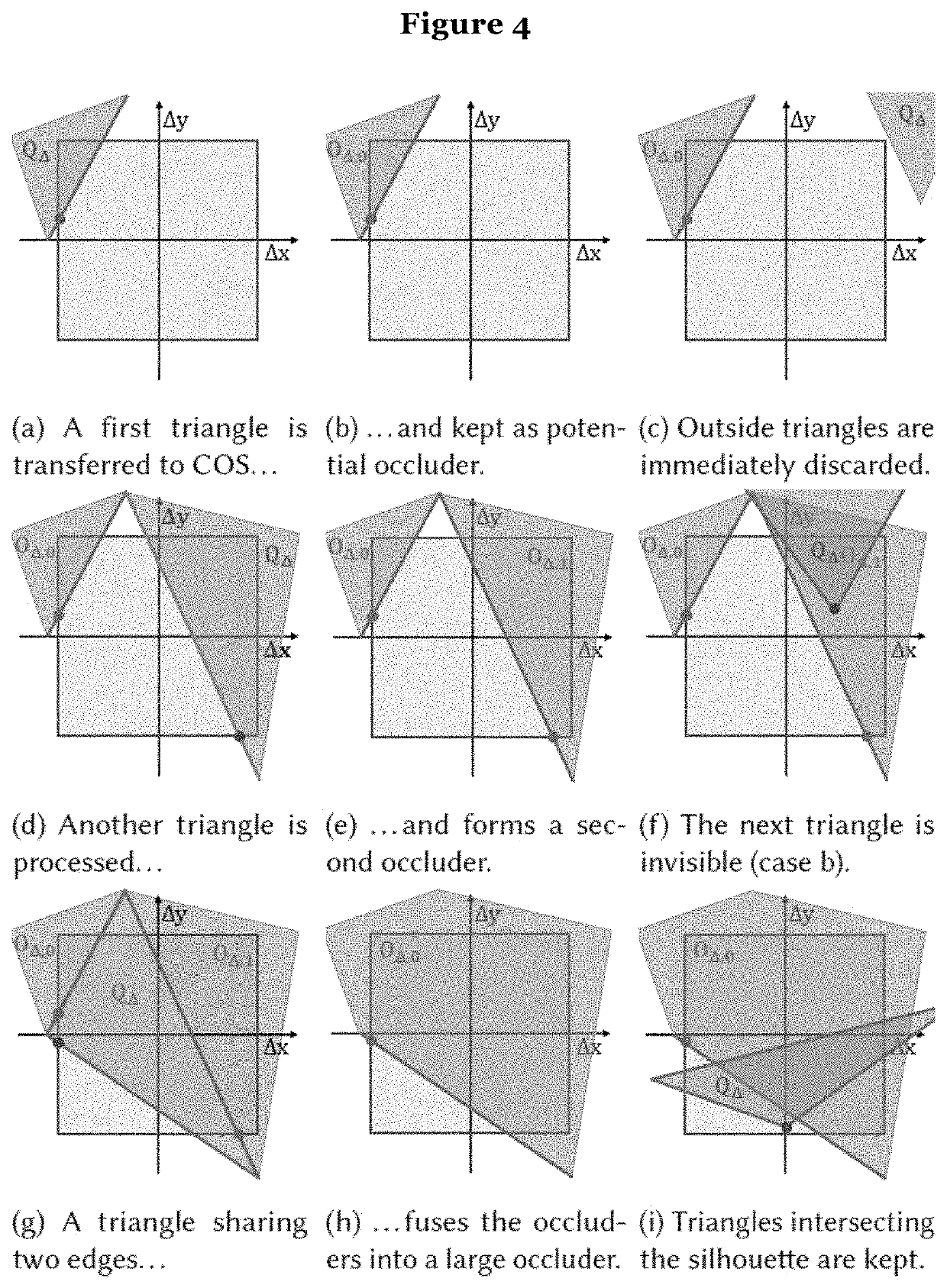Real-time potentially visible set for streaming rendering
a streaming rendering and potentially visible technology, applied in the field of real-time potentially visible set for streaming rendering, can solve the problems of insufficient rendering power provided by mobile chips, inability to meet the demand of most current high-end graphics processing units (gpus), and suffer quality loss, so as to achieve the effect of reducing the rendering load on the clien
- Summary
- Abstract
- Description
- Claims
- Application Information
AI Technical Summary
Benefits of technology
Problems solved by technology
Method used
Image
Examples
Embodiment Construction
[0025]FIG. 1a shows a method for a streaming rendering implemented on a server according to a first embodiment of the invention. In step 110, a potentially visible set (PVS) of polygons (triangles) is determined in real-time using graphics data comprising polygons (triangles) and a current camera view as inputs.
[0026]According to the invention, the method determines whether an object may be sampled at a given location on screen, given a set of potential camera views or movements. Extending this approach to all sample locations on screen and further to all locations in between, the visibility of all objects may be determined with respect to all others, under all camera movements.
[0027]In step 120, the potentially visible set of polygons is augmented with shading data. In step 130, the resulting graphics data is encoded and sent or transmitted to the client.
[0028]FIG. 1b shows a method for rendering the streamed graphics data received from a server. In step 140, the graphics data is d...
PUM
 Login to View More
Login to View More Abstract
Description
Claims
Application Information
 Login to View More
Login to View More - R&D
- Intellectual Property
- Life Sciences
- Materials
- Tech Scout
- Unparalleled Data Quality
- Higher Quality Content
- 60% Fewer Hallucinations
Browse by: Latest US Patents, China's latest patents, Technical Efficacy Thesaurus, Application Domain, Technology Topic, Popular Technical Reports.
© 2025 PatSnap. All rights reserved.Legal|Privacy policy|Modern Slavery Act Transparency Statement|Sitemap|About US| Contact US: help@patsnap.com



